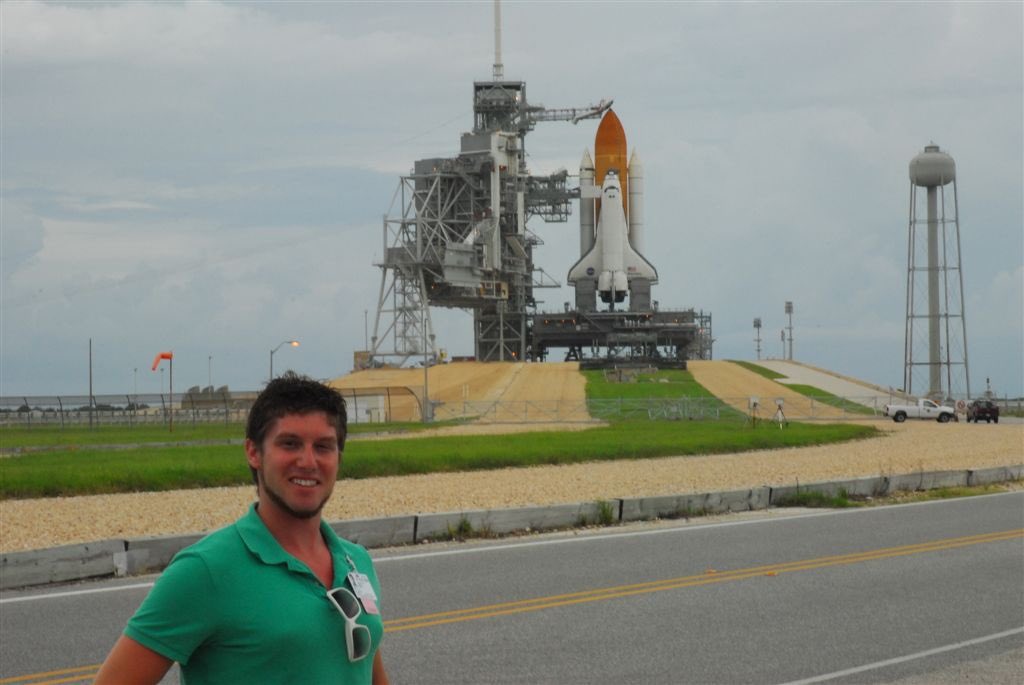Watch the full episode on YouTube – and see some rad throwback photos while you’re at it!
 Did you know our host Neal worked on the Space Shuttle before he became an entrepreneur? The infinite depth and futuristic existence of outer space intrigues most everyone, especially those who find themselves fascinated with the research behind the unknown. Tech Coast Angels San Diego president Caitlin Wege is no exception, as from a young age, she found herself being amazed by the intricacies of space and the work put into researching it.
Did you know our host Neal worked on the Space Shuttle before he became an entrepreneur? The infinite depth and futuristic existence of outer space intrigues most everyone, especially those who find themselves fascinated with the research behind the unknown. Tech Coast Angels San Diego president Caitlin Wege is no exception, as from a young age, she found herself being amazed by the intricacies of space and the work put into researching it.
In this episode, Neal and Caitlin chat about manned space and the investable space opportunities with members of TCA San Diego. Tune in to geek out about everything from space junk to nano satellites.
2:22 Caitlin introduces Neal, who discusses his extensive background as a systems engineer for Pratt & Whitney Rocketdyne from 2008 to 2013. Neal goes on to talk about how he primarily dealt with the business aspect of rocket launches, as he was in charge of building a plan for future launches. During this time, he took part in 12 Space Shuttle launches and about 130 engine tests.
 7:31 After they retired the Space Shuttle, Neal continued to work, but most of the company’s staff was laid off. Neal, who was 25 years old at the time, partnered with his coworker, Adam Markowitz, to help engineers market themselves for employment. That project evolved into a company called Portfolium, a software company that was sold for $34 million in 2019. This venture was Neal’s first step into becoming involved in the San Diego startup scene.
7:31 After they retired the Space Shuttle, Neal continued to work, but most of the company’s staff was laid off. Neal, who was 25 years old at the time, partnered with his coworker, Adam Markowitz, to help engineers market themselves for employment. That project evolved into a company called Portfolium, a software company that was sold for $34 million in 2019. This venture was Neal’s first step into becoming involved in the San Diego startup scene.
8:48 Neal runs through the main engine details of the Space Shuttle, which is 14 feet long, 8 feet in width, and 8,000 pounds in weight, making it the same size as a fighter jet engine, but producing 10 times the thrust.
11:34 Neal details the intensive launch sequence required to send seven people into space.
13:56 Neal discusses manned space history. The first shuttle was created in 1969, with its manned launch in 1981. Going forward, SpaceX was founded in 2002 and had its first manned launch this year. In addition, the Artemis Program holds the goal of landing the first woman and next man on the moon by 2024. SpaceX and Boeing have contracts to ”taxi” people and supplies to the Space Station, primarily for scientific purposes and experimentation on human development and such.
16:30 Neal discusses the politics of space. Contrary to popular belief, NASA has a small $20 billion budget. While this may seem like a significant amount, a single aircraft carrier costs $13 billion. NASA’s budget is not only spent researching space, but also researching on earth, contributing towards diplomatic relations through science collaboration with other countries such as Japan, Russia, etc, and impacting the greater humanity. Private companies such as SpaceX are able to effectively utilize their government funding by vertically integrating, ultimately cutting their costs significantly.
21:31 Neal talks about the future of space and investment opportunities. Currently, private companies like SpaceX have been able to use large NASA contracts to develop rockets used for man missions as well as private endeavors. In terms of investments, Neal believes there is huge growth potential for space in areas such as satellites, in-space propulsion, in-space GPS, energy utilization, and radiation protection.
23:10 Neal answers questions from TCA members on topics such as tech transfer between the US military and NASA, space assets, and radiation protection in space.
30:56 Neal discusses more investments in space. One example is Rocketlab, a newer company building full rockets to raise money for the ecosystem around satellites. Also, SpaceX, who’s first raise was $60 million, has raised a total of $3.2 billion over 18 years, with the entire company now being valued at $33 billion. (Update since recording: SpaceX raised an additional $1 billion recently and is now valued at $46 billion).
38:45 Space debris is discussed. It burns up upon entering the atmosphere, but because there is a large quantity of it, some of it doesn’t burn and can cause complications. Due to the fact that debris is made up of aluminum (weak magnetic force), it’s difficult to catch debris flying at 20,000 mph, so while we have infrastructure to make satellites, there is a significant need for something to clean up and collect space debris.
Thanks to our partners at Cox Business for their support in enabling us to grow the San Diego ecosystem.
Keep up with Tech Coast Angels:
Website: https://www.techcoastangels.com/
Twitter: @tcasandiego


